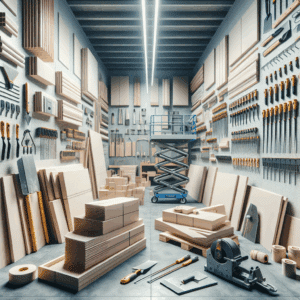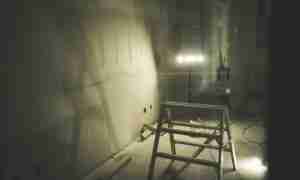Drywall, also known as gypsum board or plasterboard, is a ubiquitous building material that plays a crucial role in constructing homes and commercial spaces. While it may seem like a simple material, the science behind drywall is fascinating. In this guide, brought to you by Utah Drywall and Repair, we will explore the materials used in drywall production and their impact on its properties and performance.
Drywall is the unsung hero of interior construction, providing walls and ceilings with strength, insulation, and a smooth surface for paint or other finishes. To understand its versatility, it’s essential to delve into the materials that make up this deceptively simple building component.
Contents
The Composition of Drywall
At its core, drywall consists of a gypsum core sandwiched between layers of paper. This seemingly basic composition is the foundation for its wide range of applications and performance attributes.
Key Materials in Drywall
1. Gypsum Core
- Composition: Gypsum is a naturally occurring mineral (calcium sulfate dihydrate) that is heated and ground to create a fine powder. This powder is then mixed with water to form a thick slurry, which is used to create the core of the drywall panel.
- Impact: Gypsum is the key to drywall’s fire resistance and strength. When heated, it releases water vapor, effectively slowing down the spread of flames. Its hardness and durability also provide structural integrity.
2. Paper Covering
- Composition: Drywall panels have paper coverings on both sides. The face paper is typically thicker and smoother, while the back paper is rougher and designed to bond with joint compound.
- Impact: The face paper creates a smooth surface for painting or applying wall finishes. The back paper ensures adhesion between the core and the joint compound, allowing for seam and joint treatment.
3. Additives
- Composition: Various additives may be incorporated into the gypsum slurry to enhance specific properties. These can include fire-resistant additives, anti-mold agents, and soundproofing materials.
- Impact: Additives allow drywall to meet specific performance requirements. For example, fire-resistant additives improve its ability to withstand high temperatures, while soundproofing materials enhance its acoustic properties.
The Impact of Materials
1. Strength and Durability
- Gypsum’s natural hardness and the core’s dense composition give drywall its strength and durability. It can withstand impacts and support heavy loads when properly installed.
2. Fire Resistance
- The unique properties of gypsum make drywall highly fire-resistant. It releases water vapor when exposed to heat, effectively retarding the spread of flames.
3. Sound Insulation
- Drywall, especially when enhanced with soundproofing additives, provides effective sound insulation, reducing noise transmission between rooms.
4. Moisture Resistance
- Some drywall types are engineered with additives to resist moisture, making them suitable for areas prone to high humidity, such as bathrooms and kitchens.
Innovations in Drywall Materials
The construction industry continuously evolves, and drywall materials are no exception. Innovations include the development of mold-resistant drywall, lightweight alternatives, and products that enhance indoor air quality.
Conclusion
Drywall’s seemingly simple composition belies its remarkable versatility and functionality. The choice of materials in drywall production directly impacts its strength, durability, fire resistance, sound insulation, and moisture resistance. Utah Drywall and Repair understands the science behind drywall and can provide expert guidance on selecting the right drywall materials for your project. Contact us at 801-406-6350 or visit our website drywallrepairutah.com to learn more about how we can help you make informed decisions about your drywall needs.




